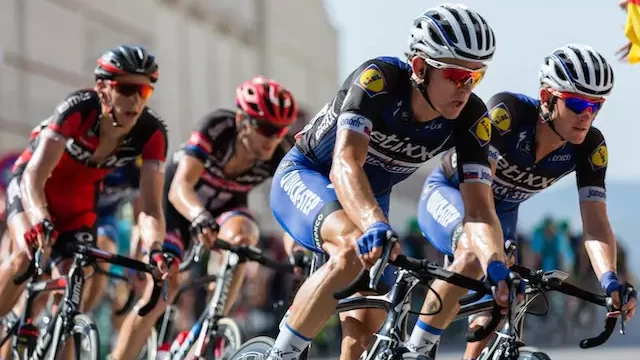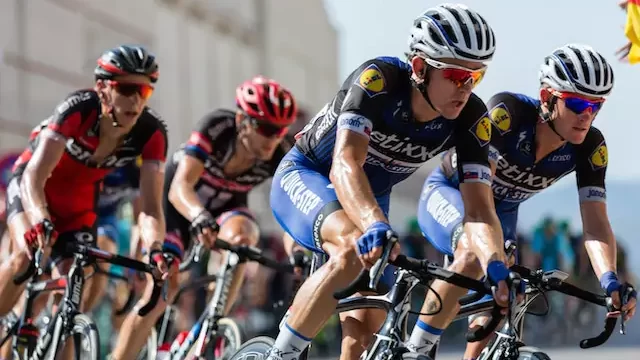In the fast-paced world of 2023, staying fit and healthy is more important than ever. One fantastic way to achieve your fitness goals is by riding a bike. Whether you’re looking to shed some extra pounds, tone your muscles, or simply improve your overall well-being, cycling offers a plethora of benefits that can’t be ignored. In this comprehensive guide, we’ll explore the power of riding a bike to lose weight and delve into the many other advantages it brings to your health and fitness journey.

How Cycling Helps You Lose Weight
Cycling is a great way to burn calories. A moderate-intensity bike ride for 30 minutes can burn about 300 calories. If you cycle regularly, you can gradually increase the intensity and duration of your rides, which will help you burn even more calories.
In addition to burning calories, cycling can also help you build muscle. Muscle tissue burns more calories than fat tissue, so building muscle can help you boost your metabolism and lose weight more easily.
Health Benefits of Cycling
In addition to helping you lose weight, cycling has a number of other health benefits, including:
- Improved cardiovascular health: Cycling helps to strengthen your heart and lungs, which can reduce your risk of heart disease, stroke, and other chronic diseases.
- Reduced risk of type 2 diabetes: Cycling can help to lower your blood sugar levels, which can help to reduce your risk of type 2 diabetes.
- Improved mental health: Cycling can help to reduce stress, anxiety, and depression.
- Increased bone density: Cycling can help to strengthen your bones, which can help to reduce your risk of osteoporosis.
- Improved balance and coordination: Cycling can help to improve your balance and coordination, which can help to reduce your risk of falls.
How to Get Started with Cycling
If you are new to cycling, start slowly and gradually increase the intensity and duration of your rides. It is also important to wear a helmet to protect yourself from injury.
Here are some tips for getting started with cycling:
- Find a comfortable bike that fits you well.
- Start with short rides and gradually increase the distance.
- Ride in a safe area, such as a park or bike path.
- Wear a helmet and other safety gear.
- Drink plenty of water before, during, and after your ride.
Different Types of Cycling Races and Their Characteristics
Cycling is a great way to get exercise and gain strength, regardless of your age or fitness level. There are many different types of cycling races to choose from, so you can find one that is challenging but also enjoyable.
Different Types of Cycling Races
Here are some of the most popular types of cycling races:
- Road races: Road races are the most common type of cycling race. They are typically held on paved roads and can be either short or long distances.
- Track races: Track races are held on velodromes, which are closed-circuit tracks. They can be either individual or team events.
- Mountain bike races: Mountain bike races are held on off-road trails. They can be either cross-country races or downhill races.
- Cyclo-cross races: Cyclo-cross races are held on a variety of terrain, including dirt, grass, and pavement. They are typically short races that require riders to dismount and carry their bikes over obstacles.
- Time trials: Time trials are individual races against the clock. Riders start at one point and race to another point, with the fastest rider winning.
Characteristics of Different Types of Cycling Races
The different types of cycling races have different characteristics. Here are some of the key characteristics of each type of race:
- Road races: Road races are typically long and challenging. They can be either mass start races or time trials.
- Track races: Track races are typically short and intense. They can be either individual or team events.
- Mountain bike races: Mountain bike races are typically technical and challenging. They can be either cross-country races or downhill races.
- Cyclo-cross races: Cyclo-cross races are typically short and unpredictable. They require riders to be able to dismount and carry their bikes over obstacles.
- Time trials: Time trials are typically individual races against the clock. They require riders to be able to ride consistently at a high pace.
How to Cycle for Weight Loss at Home
Here are some additional tips for cycling for weight loss at home:
- Ride indoors. If you don’t have access to a safe place to ride outdoors, you can ride indoors on a stationary bike.
- Watch your diet. Even if you are cycling regularly, you still need to watch your diet if you want to lose weight. Eat healthy foods and avoid processed foods and sugary drinks.
- Be patient. It takes time to lose weight, so don’t get discouraged if you don’t see results immediately. Just keep cycling and eating healthy, and you will eventually reach your goals.
Result
By incorporating regular cycling into your routine, you can expect to see improvements in your weight, muscle tone, and overall body shape. It’s a holistic approach to fitness that not only helps you achieve your weight loss goals but also enhances your overall health and well-being.
FAQs
What’s the ideal bike for weight loss?
The amount of time it takes to see results from cycling depends on a number of factors, including your fitness level, the intensity of your rides, and the consistency of your workouts. However, most people start to see results within a few weeks of starting a regular cycling routine.
What muscles does cycling work?
Cycling works a variety of muscles, including:
- Quadriceps
- Hamstrings
- Gluteus maximus
- Calves
- Core muscles
How many calories can I burn cycling?
The number of calories you burn cycling depends on a number of factors, including your weight, the intensity of your ride, and the duration of your ride. A moderate-intensity bike ride for 30 minutes can burn about 300 calories.





